The Beginner’s Guide to Deep Cycle Marine Batteries 2025
What comes to mind when you think of a deep cycle marine battery? Do you picture something like a battery that aids your boat in functioning properly, or something that crosses your mind only while you are not left with any power in the middle of the lake? Whether you are a trained sailor or just beginning, knowing the critical details of these batteries is a must. Relax, we’re turning over each part of this subject without any overly complicated explanations of concepts or “battery-speak” as we like to call it.
Let’s fasten our seatbelts – or batten down the hatches – as we explore the world of marine deep cycle batteries!
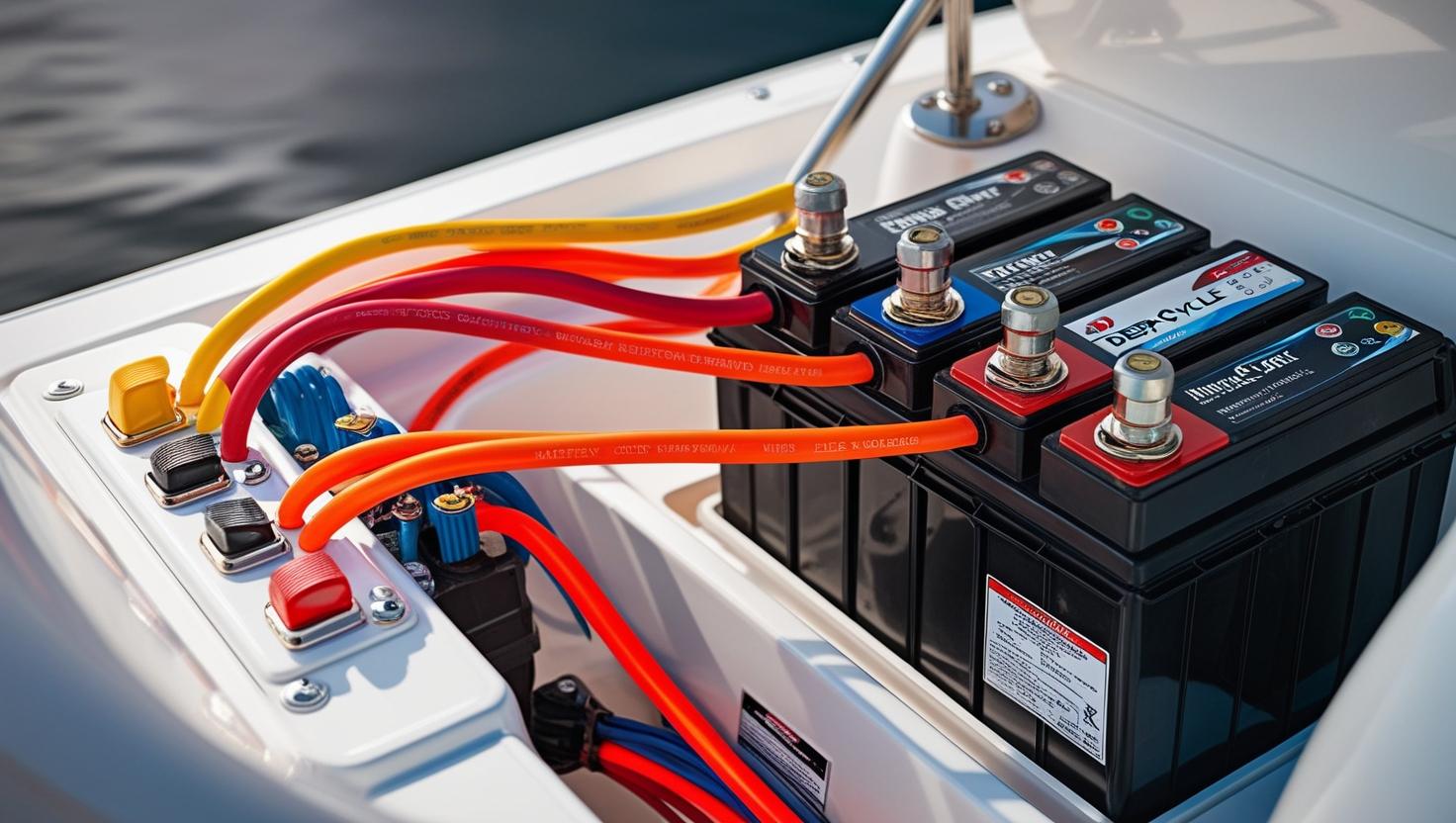
What is a Deep Cycle Marine Battery?
A deep cycle marine battery serves as a dependable companion, always there to help whenever needed. It is built to provide you with a constant supply of energy for a longer duration. This sets it apart from an ordinary car battery that offers a power surge which can be utilized until the engine is running and then it switches off.
These type of batteries are made to handle long and consistant discharges just like a wifi connection when you are streaming Netflix. No one wants to lose connection mid episode! In a like manner, a marine deep cycle battery is designed to discharge and recharge an infinite amount of times without losing capacity, making it ideal for powering lights, pumps and electronics on boars.
Characteristics of a Deep Cycle Marine Battery:
Longer Discharge Cycles: Deep discharges with no damage (up to 80%).
Durability: Ability to operate for long periods of time without charge.
Steadiness: Can withstand the tough conditions of marine surroundings.
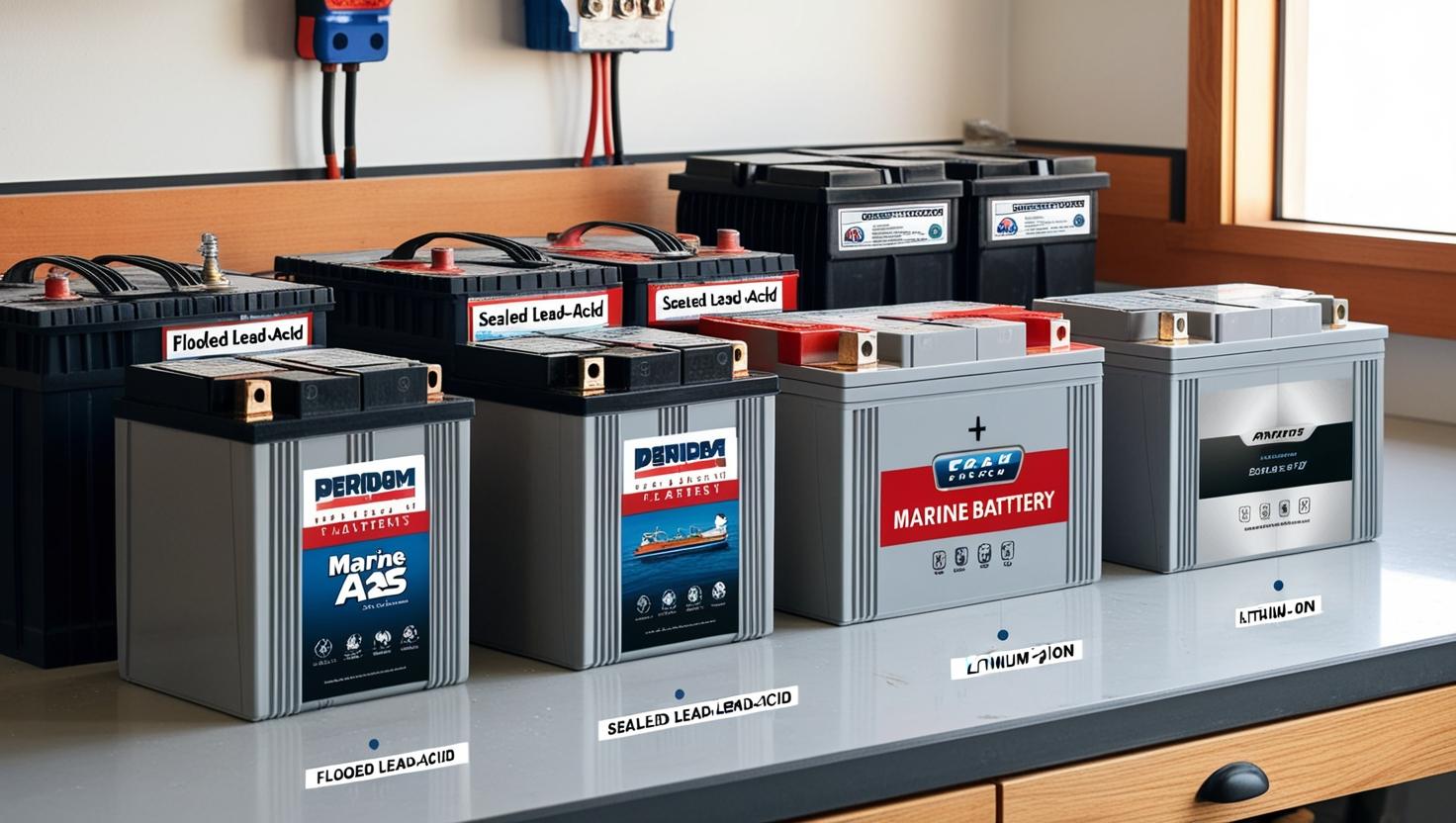
Types of Deep Cycle Marine Batteries
All deep cycle marine batteries are not created the same and their differences can be quite distinct. Imagine having all the right tools for a particular job, choosing a philips screwdriver and not a hammer.
1. Flooded Lead-Acid Batteries (FLA)
They are the default deep cycle marine batteries that are used for serval decades. They have been the default and frequently utilized by boaters because they are cheap and efficient. They are though not completely maintanace free as they do require checking electrolytes levels and cleaning terminals.
Pros:
Affordably priced.
Easy to maintain and outrival others in lifespan.
Cons:
Must be serviced.
Charging them can lead to gassing, this requires ventilation.
2. Sealed Lead-Acid Batteries (SLA)
They are sealed and maintenance free which means there is no water level or gassing worry. These batteries are a great choice for people who don’t want the hassle.
Pros:
Remains untended during usage.
Spill proof and very safe.
Cons:
Flooded option batteries are cheaper.
If these batteries are frequently discharged too deeply, they risk damage.
3. Lithium-Ion Batteries
If you want to get fancy (and spend a bit more), lithium ion deep cycle marine batteries might be for you. They are light weight, more efficient, and last more than the traditional lead-acid options. Like a marine battery, it provides an edge over existing options with a high-tech power source to support its functionality.
Pros:
Fast charging
Lightweight and compact
Longer lifespan (up to 10 years or more)
Cons:
Requires a specific charging system
Expensive upfront cost
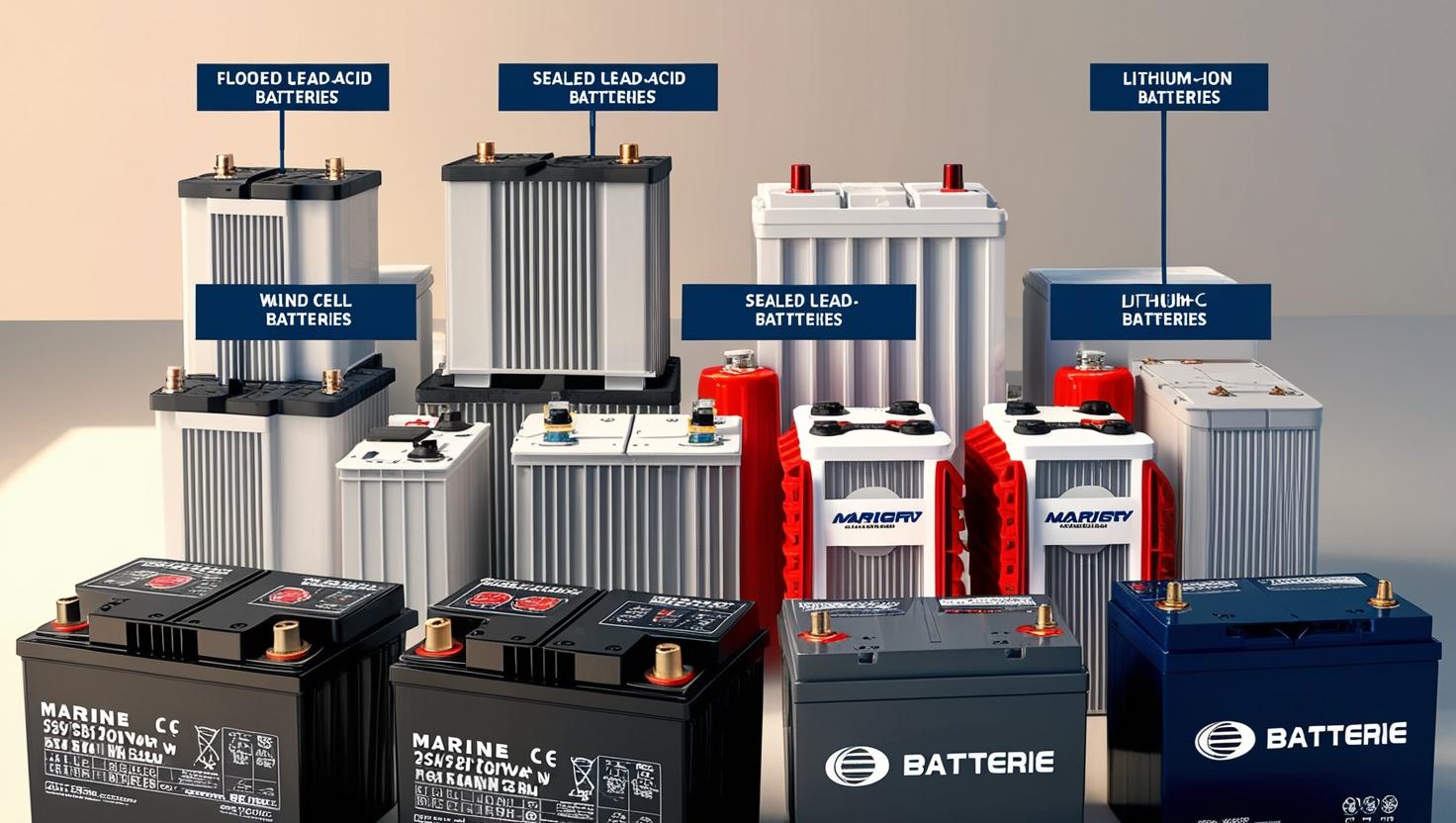
More Benefits Of a Deep Cycle Marine Battery
Consider your deep cycle marine battery the underappreciated champion of your vessel. As you cruise through the waters admiring the scenery, this beast is doing work in the background keeping everything such as the radio and the bilge pump powered. Without it, you would be using a car battery to power the electronics, which is feasible, but not the best option. Think of using a phone for a hotspot to get wifi; it is functional, but not the best solution.
How a Deep Cycle Marine Battery Can Be Beneficial?
Lighting: Because who wants to fish in the dark?
GPS and Electronics: get lost? Not on our watch.
Bilge Pumps: Help to keep your boat dry, even while you are making waves.
Trolling Motors: For all those hours spent fishing.
How to Select the Best Deep Cycle Marine Battery
Selecting a proper deep cycle marine battery is no different from buying a new mobile phone. The battery should be dependable and should fulfill your requirements. Here’s what to keep in mind:
1. Capacity (Ah or Amp-Hours)
The capacity or storage device of a battery is in amp-hours (Ah); this defines how long the battery can sustain operations before needing recharge. If you are using a lot of electronic devices at the same time or plan to stay out on water for a long time, then a deep cycle marine battery with high amp-hour rating should be selected.
2. Voltage
Marine batteries typically come in 12V, 24V, and even 36V. The common voltage choice for small and average sized boats is 12V lower to mid-priced vessels, but larger vessels or those with multiple power needs may need a higher voltage setup.
3. Cold Cranking Amps (CCA)
The CCA rating is instead related to the general functionality of deep cycle batteries. Even though they don’t spend much time cranking engines, the amps rating is still quite important. Having a battery with higher CCA is helpful in colder regions and CCA can ensure that the engine starts effortlessly in the cold climate.
4. Brand and Reviews
The same applies for any important purchase you make, you should safely research brand names that are reviewed and recommended the most. Optima, VMAX, and Trojan marine deep cycle batteries are considered to have securely marked their spot in the industry above other brands which is why its important to checkout reviews first before making a purchase.
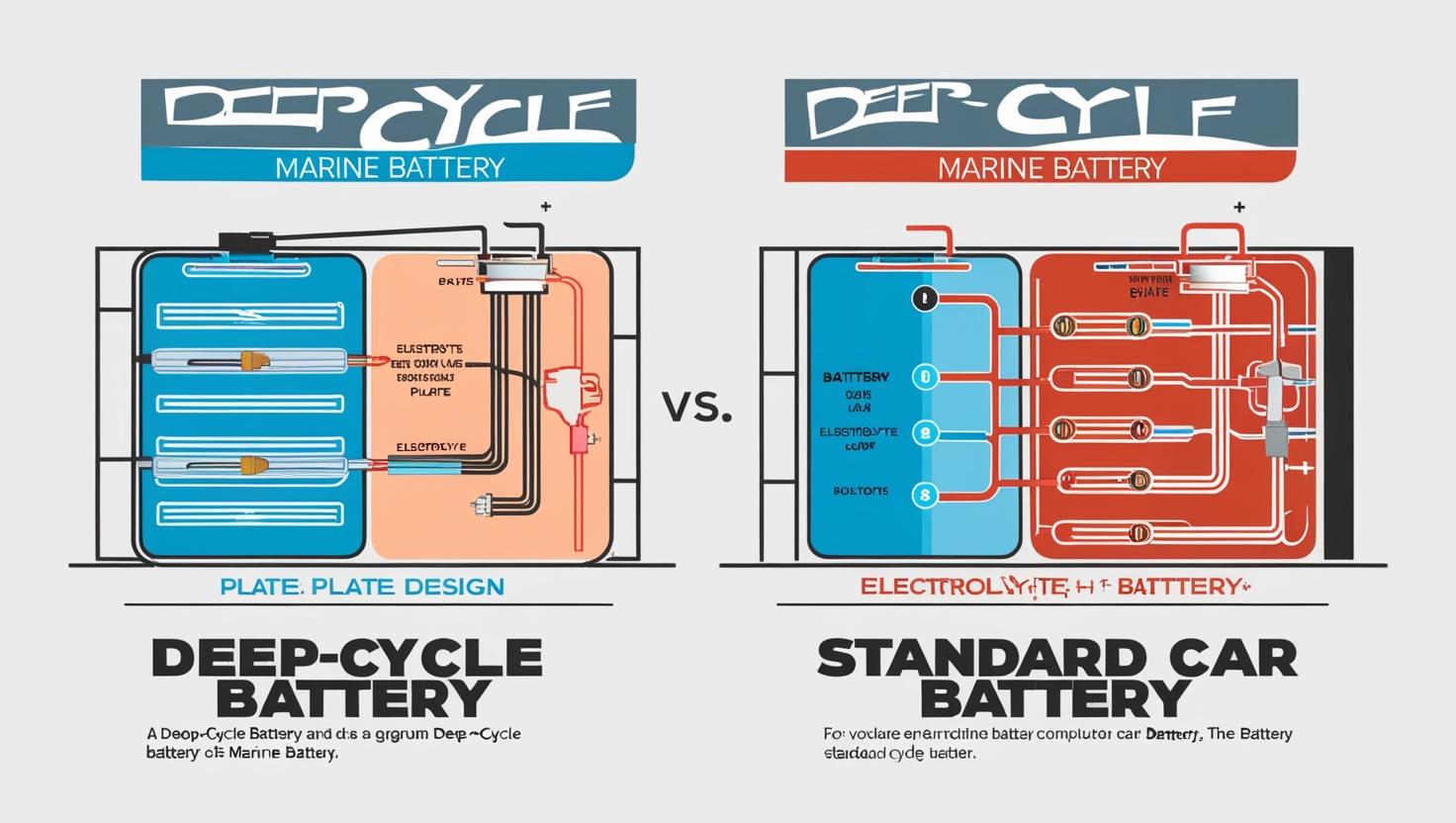
Maintaining Your Deep Cycle Marine Battery
Every single living thing on this planet requires some form of care and affection which is true for batteries too. While a consumer marine deep cycle battery might be slightly less demanding than a pet, it too requires proper and rigorous care which will allow you to maximize the power stored in it for comfort and convenience in the longer run like so:
1. Keep It Charged: Always make sure the battery is charged after usage. Avoid completely discharging it to maintain its lifespan longer.
2. Store It Properly: Make sure to avoid temp extremes during off seasons like extreme heat or cold as they can be damaging to a poor consumers battery.
3. Clean the Terminals: Keeping things moving smoothly means cleaning the terminals of the battery which helps increase performance that build up of corrosion can harm.
FAQ Section On Deep Cycle Marine Batteries
1. For how long do deep cycle marine batteries last?
Deep Cycle Marine Batteries can last between 3-10 years depending on if the battery is maintained well or how frequently it is used. Lead-acid options are cheaper, but lithium-ion batteries are more expensive and have a longer lifespan.
2. Can a car battery be used in place of a deep cycle marine battery?
You can, but it will not be effective. Car batteries are built and designed for short term uses of powering a device. On the other hand, a deep cycle marine battery is built to sustain the long and consistent power requirements of your boat.
3. What are the signs to look out for in order to know when a deep cycle marine battery needs to be replaced?
Some reasons to replace the battery is if the battery is showing some sort of physical damage, or if it is having a difficult time holding a charge. If your boat starts losing battery power at a faster rate, consider putting in a new battery.
Conclusion: Power Up with Confidence
A deep cycle marine battery is vital to your boating experience, whether you are cruising through calm waters or fighting choppy waves. Having a well-functioning battery means having the freedom never to worry about running out of power. With a good understanding of the different types of batteries, how to choose the best one for your boat, and proper maintenance, you can rest assured that your battery will keep you afloat (literally) for many adventures to come.
And keep in mind that, just like you wouldn’t embark on a long road trip with a half-full gas tank,
not boating with a fully charged deep cycle marine battery is a recipe for disaster—unless some spontaneous paddle-wielding exercise sounds tempting!
You Can Read Our Latest Posts……. Click Here
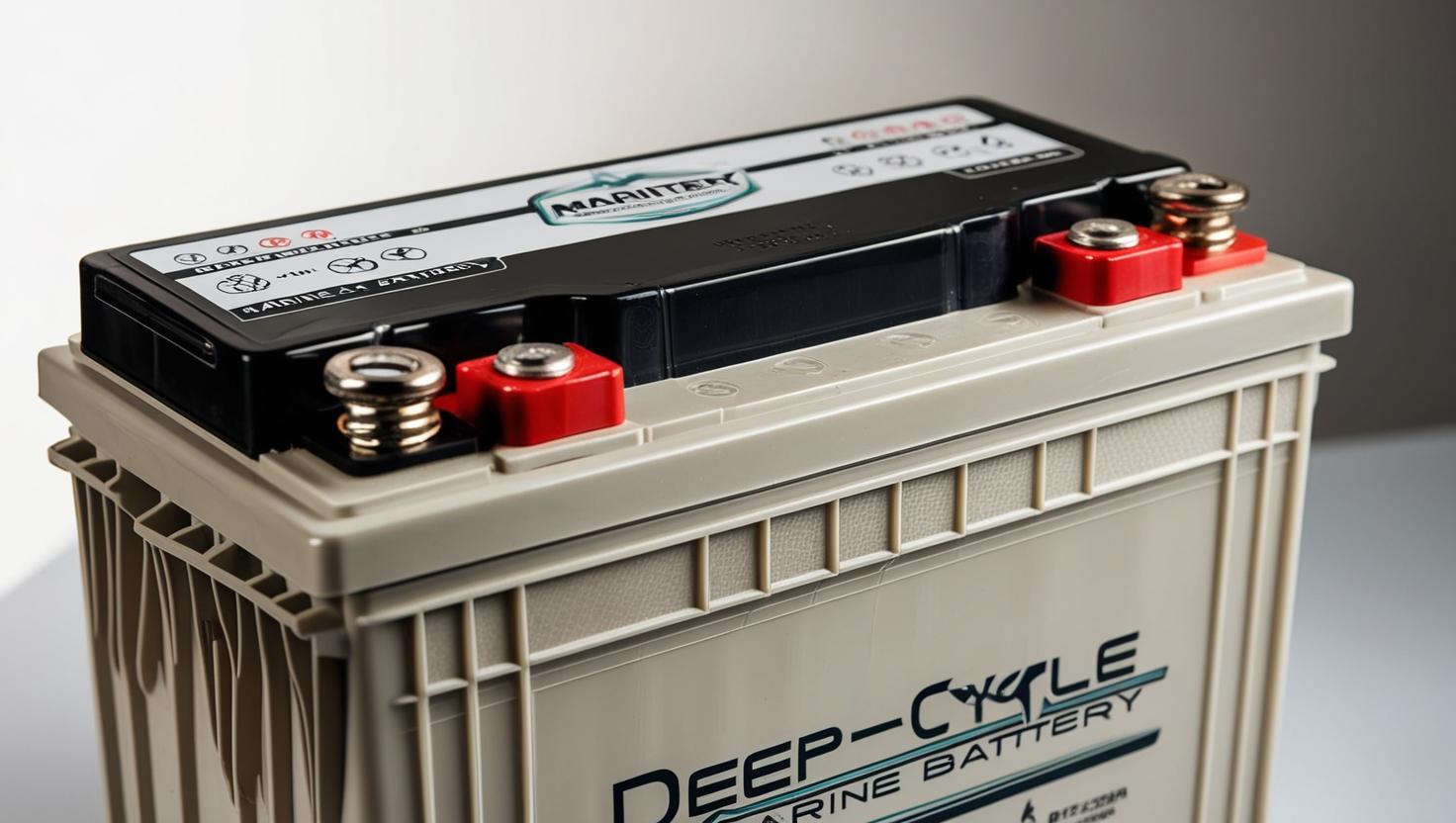
В сети можно скачать базу для хрумера, но важно проверить ее качество перед использованием.